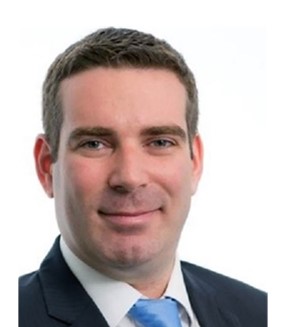In brief
- Modernization initiatives are driving technology investment in the financial services industry, with IT spending on digital transformation and related changes projected to rise, emphasizing the need for anticipating trends and minimizing costly adjustments.
- Overcoming change fatigue and complex interconnected systems is a challenge for transformation teams in modernization programs, requiring simplified architecture and data management to ensure efficiency.
- Embracing a culture of cloud adoption and involving the workforce in change programs rather than a top-down approach enhances innovation and business alignment, enabling engineering teams to focus on value-driven changes.
As relentless waves of change remodel the competitive business world, modernization initiatives have become the primary driver of technology investment and spend across the banking and financial services industry.
According to Gartner’s July 2021 analysis, IT spending on digital transformation (a priority for 90% of corporate leaders) and other related business change, was expected to rise 5.3% to $4.4 trillion in 2022. This increasing investment includes IT modernization and true digital transformation spend, both key as the world of technology advances.
Gartner’s research team further commented, “CIOs are looking for partners who can think past the digital sprints of 2020. This means building technologies and services that don't yet exist, and further differentiating their organizations in an already crowded market." Anticipating the major trends in change helps minimize costly course corrections and maximize investment returns.
Focus priorities and mitigate change fatigue
Transformation teams are not just dealing with a single initiative in one area of a bank, they're competing with a swell of conflicting priorities from other departments and the knock-on impacts of their change agenda, too.
In 2020, Gartner noted, “the amount of change that the average employee can absorb without becoming fatigued has been cut in half compared to 2019.” So, engineers are having to work around change fatigue, while ensuring that developments don’t interfere with other banking functions.
This makes complicated modernization programs difficult to complete. Heavily interconnected systems, laden with technical debt — often with non-core functionality added organically without any thought for the overarching organizational architecture — add unnecessary complexity to the landscape.
Simple changes can quickly turn into major programs due to the burden of unwinding and simplifying the logical architecture. This simplification should ensure that data is mastered and distributed from the correct source of truth, with the right access, integrity, completeness and timeliness controls in place.
Invert the hierarchy
From the perspective of the trading technology space, change — particularly cloud adoption — is really accelerating. Cloud is now widely accepted for mission-critical systems. Cloud is a primary driver of innovation because it allows technology teams to make rapid use of the latest technology and leverage significant investment made by the big technology companies.
Yet 80% of organizations have a top-down approach to managing change; a strategy that slows and complicates progress by being disconnected from the development workflow. In fact, in most successful transformations, it’s the workforce (not executives) that leads change programs. Centralized change processes detach both business and technology approvers from the detail. This approach leaves them unaware of the complexity, interconnectedness and dependencies of change, and hampers evolution.
As Agile practices continue to be adopted and accepted, business stakeholders can get much more involved with technology change than ever before — a hugely positive development. Rather than taking this responsibility as an add-on to their day job, business product owners are declared full-time resources for change programs. This creates a much closer alignment of business and technology, and shortens the feedback loop for decision-making.
Embrace cloud culture
Successful cloud implementation isn't just about the infrastructure. It's about giving engineering teams the ability to innovate by removing headaches like long lead times with infrastructure, network changes and so on.
Software-defined infrastructure can be built with features like one-click deployment and centralized control planes to handle security, observability and other lower-level issues. This enables engineering teams to focus their valuable time higher up the stack, delivering business value and revenue-generating change.
Cloud providers are investing considerable amounts of money in innovation and adding consumption-based Platform as-a-Service offerings for cutting-edge technologies such as AI, machine learning (ML), natural language processing (NLP) and image recognition. These higher-order services let engineers focus more on business value than on having to build a technology stack from scratch. They are often based on open-source technology and enhanced to integrate with other cloud-native services such as identity and access management.
It’s about accepting that cultural shift and creating an environment with appropriate guardrails that save engineers having to concentrate on the kind of routine aspects of applications that every organization has to solve like security, authentication and authorization. That way, the technology workforce can double-down on rapid innovation and delivering exceptional business outcomes. This means working more closely with the business to drive out use cases, embracing a fail-fast mindset to prove-out ideas and quickly putting aside those where business value or viability remain unproven.
Incremental change, earlier benefits
There are a few frameworks for defining the metrics against which a transformation program can be analyzed for delivery of business value (e.g., key performance indicators [KPIs] or objectives and key results [OKRs]). They each have their own benefits, however definition of the success criteria must be completed up front, with the appropriate means to track progress throughout the initiative.
Big bang transformation programs are becoming a thing of the past. There are several reasons why but, generally, it all comes down to realizing a return on investment much earlier and being able to track this benefit throughout the program. Adopting an incremental approach is the best way to tackle the issue of business disruption; running change programs in concert with the business will minimize disruption. The approach can include things like assigning a change manager to work with affected business users, clarifying exactly what’s changing when, and quantifying the impact for users as changes continue.
Alongside the cultural shift of digital transformation, business agility and cloud-native engineering, there’s another significant shift going on within the industry. Independent software vendors (ISVs) focused on the financial services industry (both fintechs and established vendors) are looking to become more collaborative. They recognize that one product and one vendor cannot solve all business problems, and are embracing the concept of shared solutions or ecosystems.
Connect. Collaborate. Lower costs
Partly driven by the regulators’ ongoing pursuit of market standardization, ISVs continue to leverage open source and industry standards in the pursuit of functional ecosystems and lower costs which, in turn, are passed onto the customer.
ISVs cannot build these ecosystems in isolation of the market that will use them. Interconnectedness is a big part of the evolution of the systems involved. Financial institutions require solutions that don’t just meet their functional needs, but also provide thoughtful approaches to implementation, transition, and ongoing maintenance and upgrades. Many of the skills, methodologies and best practices sit with system integrators who not only work with clients, but also catalyze and integrate the ISVs.
Zoreza Global’s extensive capabilities as a systems integrator come with an array of partner ISVs in the area of capital markets trading and settlement, core banking and lending, and insurance automated analytics. Zoreza Global doesn’t necessarily build and retain intellectual property. However, we are building the concept of an as-a-Service ecosystem, utilizing existing partnerships and based on client demand. This presents the end client with fully integrated service solutions across the areas of transformation, functionality, cloud migration and support.
The numerous practical benefits of collaboration convince both existing and new ISV partners to work with Zoreza Global and its global financial services customers. Zoreza Global bridges the integration gap, offering the end customer a new approach built on multiple best-of-breed offerings whose value is greater than the sum of their parts, otherwise bought, configured and run in isolation.
Solve for both now and the future
Such interconnected, well-integrated and seamless service solutions — built to anticipate our vision of the future — can solve many of the issues that still exist within the industry.
For example, there are still organizations whose trade-capture system is completely separate from where they do their credit- and market-limit checks. Traders have to double-key information as part of their daily workflow, increasing operational risk and reducing efficiency. By implementing a framework that removes double keying you solve a series of problems, central to front-office users, at a single stroke. Although there are multiple approaches to resolving these kinds of issues, an interconnected and integrated framework underpins them all.
In 5 years, with the pace of technology transformation accelerating and fundamental shifts through digital assets, decentralized finance, AI/ML and others really starting to gain traction, any predictions made now are likely to prove well-wide of the mark. I believe that the future is converging toward solutions that deliver the right amount of standardization, purchased through consumption-based models, especially for non-differentiating technology.
A new wave of industry utilities will also emerge to mutualize cost and risk where standardization has hit a critical mass. These disruptive new technology and business trends will have gained broad acceptance. Looking ahead now to shape your organization to consume cutting-edge technology in a scalable manner, while focusing your resources onto the highest value business-differentiating programs and outsourcing lower down the stack will provide both the scalability of people and technology, and the right TCO to compete now and in the future.
Get in touch
If you’d like to find out how Zoreza Global can differentiate and amplify your voice in a crowded marketplace, visit luxoft.com/capital-markets or contact financialservices@luxoft.com.









